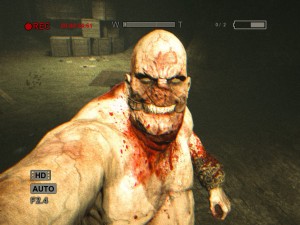The stealth genre has grown in different directions from the early works of games like Metal Gear and Wolfenstein. Being able to move around undetected has been implemented by action games, horror games, and even strategy games. However, when it’s all said and done, there are two major philosophies when it comes to stealth, and what they mean for game design.
Defensive:
Defensive stealth design is the one that most people will associate the stealth genre to. This is the act of hiding from enemies who are stronger than the player. You cannot fight them, and any combat will either be a temporary solution or get you killed.
In these games, the developers want to instill the feeling of being in over their heads to the player. Many older action games had the standard level when you lost your weapons and had to escape from a jail or prison by sneaking around. Even the game based on the Incredible Hulk movie had stealth sections where you had to avoid enemies.
In recent years the Indie scene has adopted defensive stealth for their horror titles. Everything from Five Nights at Freddy’s to Slenderman and so much more are examples of this. Many of these titles will not give the player any means of defending themselves; much less ways of interacting with the game space.
In the Outlast series, despite finding all manner of weapons and objects lying around, the player is not allowed to pick up or use any of them.
Defensive stealth design creates the feeling of hopelessness, and the understanding that violence is not the answer. Because many horror games are about average people in these situations, the lack of combat fits the narrative.
The problem with defensive stealth design is that it creates “trial and error” gameplay. Due to the player not having any options, getting caught will usually end in them failing.
The as-for-mentioned action games with stealth levels would immediately end if the player was spotted; no matter the situation.
An exception to this problem would be the Thief series that managed to strike a balance between weakness and strength. Even though Garett could not fight multiple enemies in combat, he still had a variety of tactics to get around.
With Indie horror games, it can lead to the game becoming repetitive and losing any tension generated by the design. In Amnesia the Dark Descent, I just let the enemies kill me after I was spotted, as it would take more time to try and get around them.
The less options you have to play a game will cause it to become repetitive, and ultimately limit how long a game of this kind can be.
For a completely different take, let’s look at the antithesis of defensive stealth game design.
Apex Predator:
The term “Apex Predator” stealth design was coined by Rocksteady when they were talking about designing Batman’s options in Arkham Asylum. The concept of an apex predator for stealth is that the player is the aggressor.
Instead of being on the defense, the player’s job is to get around while having the tools to defeat their enemies. Other examples of this design would include the Metal Gear Solid series, and action/stealth games that allow the player to easily take on a room full of enemies. Many open world titles will give the player more and more abilities over time; turning them into death incarnate by the end.
In these titles, the player is given enough options that the stealth gameplay becomes more like a sandbox rather than a linear experience. The Batman series had stealth challenges where the player was tasked to take out enemies while using specific strategies. Even if the enemies grow in power, they are still no match for the player.
The philosophy at work is that instead of the player hiding out of fear, they are stalking the enemies for the best way to take them out. Even XCOM 2 had elements of Apex Predator design with how concealment worked. The player could set up their squad for an ambush at any point on the map for the first fight.
Obviously, Apex Predator Stealth game design doesn’t work in a horror setting. When you’re playing a game like Solid Snake or Batman, it’s hard to feel like you’re on the defensive.
While this can be great, it does present some unique problems. Due to the player having complete control over the situation, stealth will quickly degrade into the same actions each time. By the time the player has reached the end of the game, there will not be any way to challenge them with the stealth gameplay.
In Shadows of Mordor, once the player is fully upgraded, they can lay waste to any enemy or situation in the game.
There’s only so much you can do with Apex Predator design to keep things engaging. Many action/stealth hybrids make the action side so powerful that it becomes either a determent to use stealth, or so powerful that it trivializes everything.
Sneaking or Stalking:
Stealth game design has evolved in many ways over the years. Deciding how you want to design your game is critical, as these two styles are polar opposites. Whether you want the player to run and hide or hide and stalk is up to you.
At the end of the day it all comes down to the options that you give the player. Being able to fight your opponents is just as important as ways to get away from them. If you go too far to either extreme, you will either render all challenge meaningless, or create an experience with only one way to play.
Not everyone has to be as stealthy as Batman, but I’m going to have to have words for the next stealth horror game that doesn’t let me pick up that giant cleaver against the wall.




